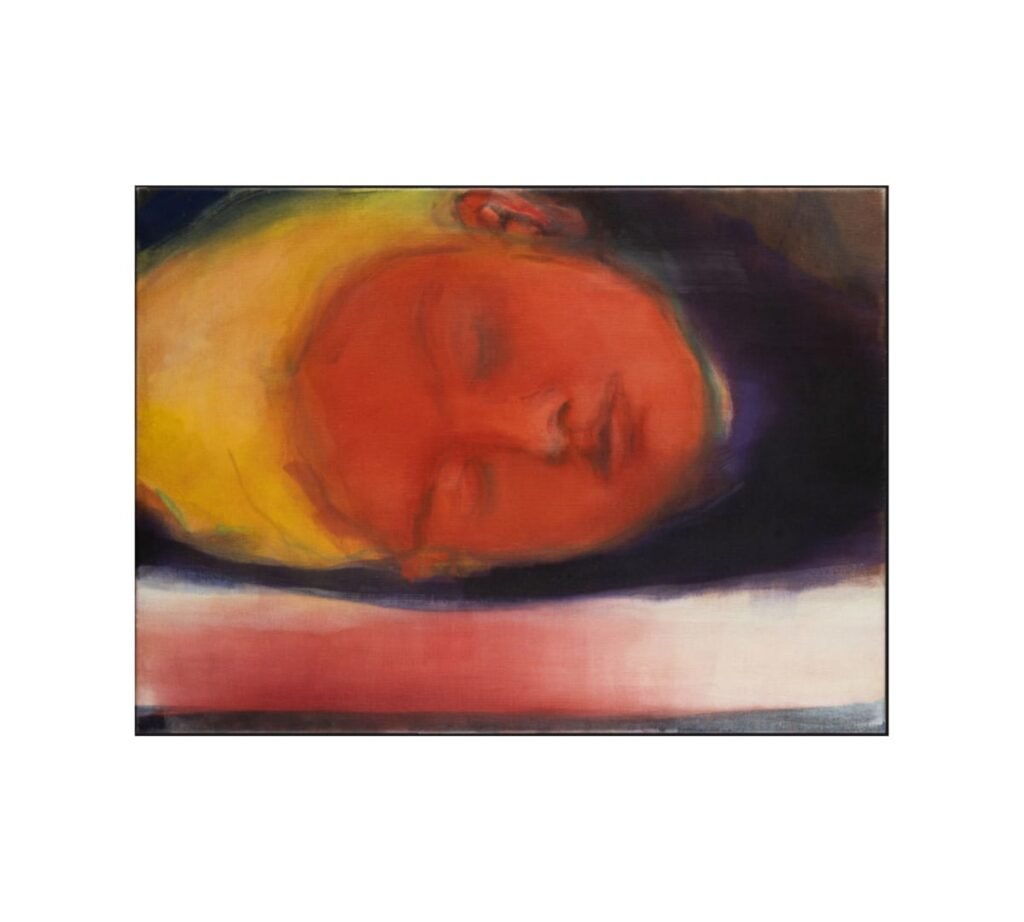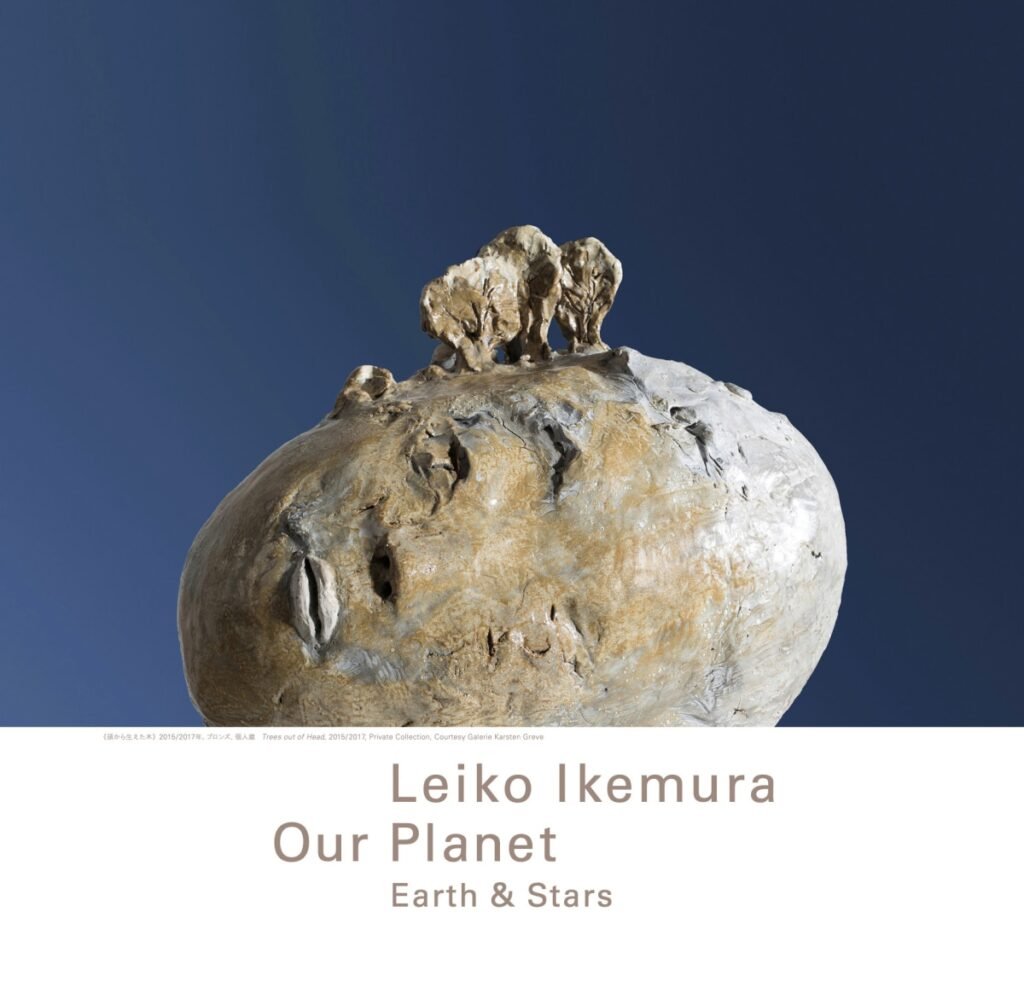Leiko Ikemura BIOGRAPHY

Early Life and Education of Leiko Ikemura
Leiko Ikemura was born in Tsu City, Mie Prefecture, Japan 1951. She grew up in a rural area of Japan. Ikemura became interested in art at a young age, influenced by her grandfather, an amateur painter. She studied oil painting at the Kyoto City University of Arts, receiving her B.A. in 1973.
After graduation, Ikemura spent time in Europe, absorbing Western art styles. She lived in Germany, where she focused on European art history and honed her painting skills. Her style evolved from traditional Japanese art to incorporate more modern and Western elements during this period.
In 1982, Ikemura moved to Cologne, Germany and has lived there since. Her relocation to Germany allowed her greater creative freedom and exposure to different artistic influences. Ikemura’s art is a fusion of Asian and Western styles, combining minimalism and realistic elements. Her paintings often depict solitary female subjects in barren landscapes, conveying alienation and existential angst themes.
What is Leiko Ikemura known for?

Leiko Ikemura is a complex and enigmatic contemporary artist. While her early work was deeply personal explorations of identity and female experience, her art has evolved to encompass humanity’s relationship with the natural world. Ikemura’s oeuvre offers glimpses into a vivid inner world of dreams, memories and emotions through painting, sculpture, installation and public art.
Career highlights

Ikemura’s Artistic Style and Influences
The contemporary Japanese artist Leiko Ikemura is known for her distinctive painting style and sculptural works that blend elements of Japanese art with Western techniques.
A dreamy, poetic quality and a fusion of artistic traditions characterize Ikemura’s paintings and sculptures. Her works incorporate motifs from Japanese folklore, mythology, and Western art history, combining a muted colour palette, minimalist forms, and a sense of mystery.
Paintings: Ikemura is best known for her paintings of young girls with pale, mask-like faces and floral motifs. The images evoke a dreamy, otherworldly quality. Japanese ukiyo-e woodblock prints and Western styles like Art Nouveau influence them.
Sculptures: Ikemura’s ceramic sculptures of female figures wrapped in kimonos blend Japanese and Western influences. The kimono-clad figures reference traditional Japanese garments but are sculpted in a minimalist, abstract style inspired by modern Western art.
Other influences: Ikemura was also influenced by Nihonga, a traditional Japanese painting style incorporating mineral pigments and gold leaf. Her works are often compared to Gustav Klimt’s, who also employed stylized patterns, golden accents, and feminine figures.
Leiko Ikemura List of Work

Major Artworks by Leiko Ikemura
Leiko Ikemura is known for large-scale oil paintings and sculptures depicting young girls and natural forms. Several of her most famous works explore the theme of awakening sexuality in adolescent girls.
Himmel (Heaven) | 1992 | This early painting depicts a young girl gazing up at a luminous, azure sky. Her pale arms are outstretched as if grasping for something just out of reach, a symbolic representation of a young girl on the cusp of womanhood. The dramatic use of color and light in this piece is characteristic of Ikemura’s signature style. |
Usagi (Rabbit) | 1995 | A bronze sculpture of a young nude girl with a rabbit mask covering her face. The girl kneels with her arms wrapped around the mask in a gesture of simultaneous attachment and removal. This work is one of many where Ikemura uses animal imagery to represent the awakening of sexuality and the discovery of one’s own identity. |
Mädchen (Girl) | 2000 | A large-scale oil painting of a girl submerged in water up to her chest. Her pale flesh and red hair glow against a dark background, creating a sense of emergence and birth. In her works, Ikemura often uses bodies of water as a metaphor for the womb, feminine sexuality, and a return to one’s origins. This painting demonstrates Ikemura’s skill in manipulating colour, light, and scale. |
Major Exhibitions
Ikemura’s works have been exhibited in solo shows at:
Kunsthalle Basel, Switzerland
Sezon Museum of Art, Tokyo, Japan
National Museum of Modern Art, Kyoto, Japan
Museum of Modern Art, New York; Center Pompidou, Paris
National Museum of Modern Art, Tokyo
Through a successful career spanning over 40 years, Ikemura has cemented her status as one of the most prominent contemporary Japanese artists working today. Ikemura currently lives and works in Cologne, Germany and Umbria, Italy.
Awards and Honors Received by Ikemura
Over her prolific career, Ikemura has received many accolades, recognizing her artistic talent and contributions.
1996 | Kunstpreis Finkenwerder |
2000 | Maria Sibylla Merian Prize |
2002 | Award of the 47th International Art Exhibition of the Venice Biennale |
2003 | Ichikawa Gakuryo Prize |
Leiko Ikemura has garnered many of the highest honours bestowed upon contemporary artists. From prestigious awards and prizes to having her works acquired by renowned museums and entered into permanent collections, she has solidified her status as an influential and groundbreaking artist. The accolades she has received are a testament to her artistic talent, skill, and lifelong dedication to her craft.
The Legacy of Leiko Ikemura’s Art
Leiko Ikemura has left an indelible mark on contemporary art. Through her paintings, sculptures, and public installations, Ikemura has explored themes of female identity, humanity’s connection to nature, and the relationship between the internal and external self.
Paintings
Ikemura is best known for her evocative figurative paintings featuring solitary female figures in barren, surreal landscapes. A restricted and muted colour palette, with shades of gray, blue and green predominating, characterizes her paintings.
The female figures appear ghostly and disconnected from their surroundings as if lost in a dream. Ikemura suggests a sense of existential angst and humanity’s isolation by placing these lone individuals in stark, empty landscapes.
Sculptures
Ikemura’s freestanding sculptures, typically rendered in bronze, also often depict the female form. However, her sculptures are more abstract and elongated, morphing the human figure into plant-like forms.
These hybrid creatures appear to sprout from the ground, fusing humanity and nature. Ikemura has said these sculptures represent “a kind of longing for belonging to the earth.” They convey a desire to reconnect with the natural world from which humans have become estranged.
Public Installations
Some of Ikemura’s most monumental and impactful works are her public art installations. Notable examples include:
“The Girl in the Water” | Nagasaki, Japan |
“The River” | 57-meter long ceramic mural at the Frankfurt International Airport in Germany |
These massive installations demonstrate Ikemura’s ability to translate her deeply personal themes into works that resonate on both intimate and grand scales. They stand as lasting tributes to her vision and artistic legacy.
Through her profound and moving works in various media, Leiko Ikemura has established herself as a leading contemporary artist. Her art forms the human experience of finding one’s place in the world, reminding us of our connection to the earth and one another. Ikemura’s legacy lives on in her timeless and universally relatable artistic expressions of humanity.






